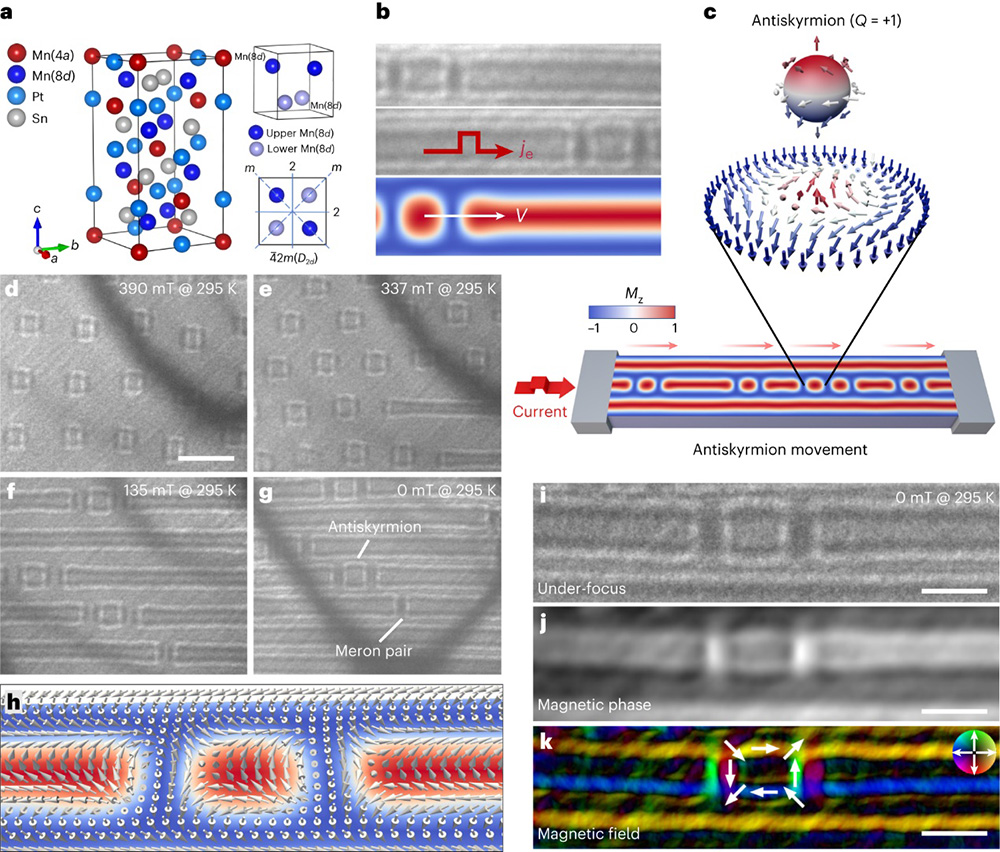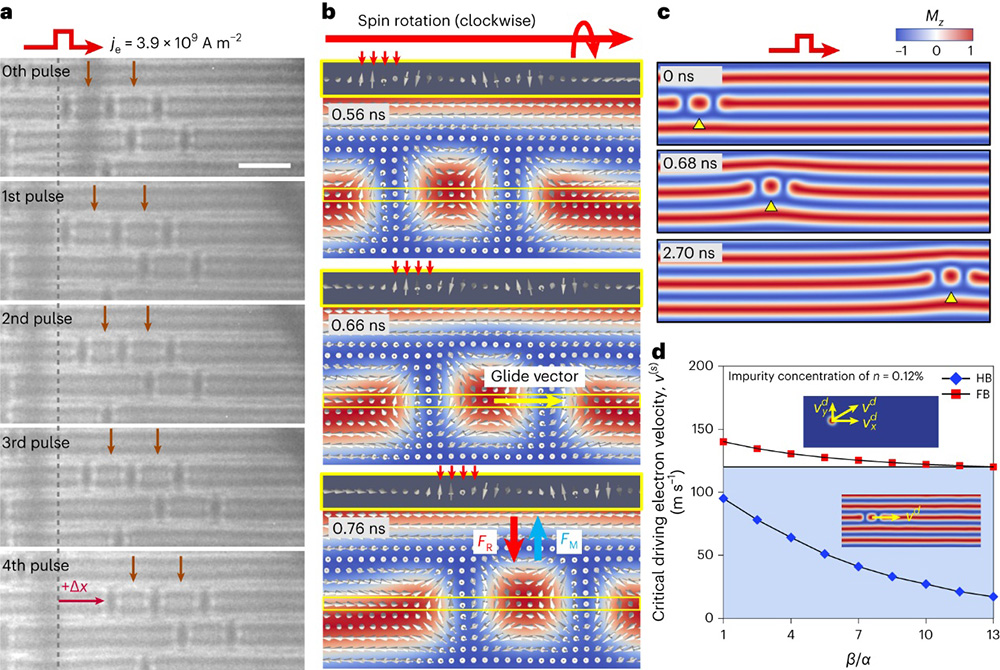Scientists experimentally discover current-driven antiskyrmion sliding
Date:12-04-2024 Print
Prof. ZHANG Ying's group in Institute of Physics, Chinese Academy of Sciences has teamed up with domestic universities and Alamos National Laboratory in United States and published their work entitled "Experimental observation of current-driven antiskyrmion sliding in stripe domains" in Nature Materials on Apr. 11, 2023.
The magnetic (anti)skyrmions with topologically protected spin structures are promising as next-generation information units in spintronic devices. The ability to transport (anti)skyrmions using electric currents is particularly interesting for high-efficiency data storage and process. However, the big challenges lie in the undesired lateral deflection towards the sample edge and eventual annihilation due to the magnus force from (anti)skyrmion hall effects. Moreover, despite the abundant skyrmion progress, the current-driven movement of antiskyrmions have not been experimentally realized yet.
Under the consistent support of Academician Baogen Shen, Prof. ZHANG Ying's work team has established a specialized magnetization characterization platform with Focused ion beam microscopy, Lorentz Transmission Electron Microscopy (L-TEM) and multiple in-situ holders et. al. The platform is powerful to directly study the topological domains with ultra-high spatial resolution under different external fields. The work team has systematically studied the skyrmion generation and manipulation in many kinds of materials and accumulated rich experiences.
This time, the researchers have successfully demonstrated the straight sliding dynamics of antiskyrmions driven by electric currents at room temperature and without the presence of any external magnetic field in Mn1.4PtSn chiral magnet. This achievement is realized by embedding antiskyrmions within strongly-correlated helical stripe domains in contrast to the common manipulation of topological skyrmions in the ferromagnetic background. These stripe domains provide naturally one-dimensional linear tracks, along which antiskyrmion sliding is launched at low current densities and without transverse deflection from the antiskyrmion Hall effect. The higher mobility of antiskyrmions within the helical stripe background can be well understood through micromagnetic simulations and collective pinning theory, thereby easily smearing out random pinning potentials. Furthermore, this method can be extended to the sliding motion of merons or skyrmions in stripe domains, further demonstrating its general applicability.
Thus, the demonstration and comprehensive understanding of antiskyrmion movement along naturally straight tracks at low current densities in conquer of deflection under a wide temperature range and zero magnetic field offers a new perspective for (anti)skyrmion application in spintronics.
This study entitled "Experimental observation of current-driven antiskyrmion sliding in stripe domains" was published on Nature Materials.
The study in China was supported by the Strategic Priority Research Program of the Chinese Academy of Science, National Science Foundation of China and the CAS Project for Young Scientists in Basic Research.

Fig.1 Realization of room-temperature antiskyrmions with different magnetization states and their straight current-driven behaviour along the naturally helical stripes at zero field. (Image by Institute of Physics)

Fig.2 Influence of electric current direction, density and pulse period on the antiskyrmion sliding along the straight stripe domain. (Image by Institute of Physics)

Fig.3 Mechanism of antiskyrmion sliding along stripe domains in comparison with ferromagnetic background. (Image by Institute of Physics)

Fig.4 Room-temperature merons sliding in stripe domains at zero field. (Image by Institute of Physics)
Contact:
Institute of Physics
ZHANG ying
Email:zhangy@iphy.ac.cn
Key words:
antiskyrmion; straight movement; low current density; room temperature; helical stripe domains
Abstract:
Magnetic skyrmions are promising as next-generation information units. Their antiparticle—the antiskyrmion—has also been discovered in chiral magnets. Here we experimentally demonstrate antiskyrmion sliding in response to a pulsed electric current at room temperature without the requirement of an external magnetic field. This is realized by embedding antiskyrmions in helical stripe domains, which naturally provide one-dimensional straight tracks along which antiskyrmion sliding can be easily launched with low current density and without transverse deflection from the antiskyrmion Hall effect. The higher mobility of the antiskyrmions in the background of helical stripes in contrast to the typical ferromagnetic state is a result of intrinsic material parameters and elastic energy of the stripe domain, thereby smearing out the random pinning potential, as supported by micromagnetic simulations. The demonstration and comprehensive understanding of antiskyrmion movement along naturally straight tracks offers a new perspective for (anti)skyrmion application in spintronics.

